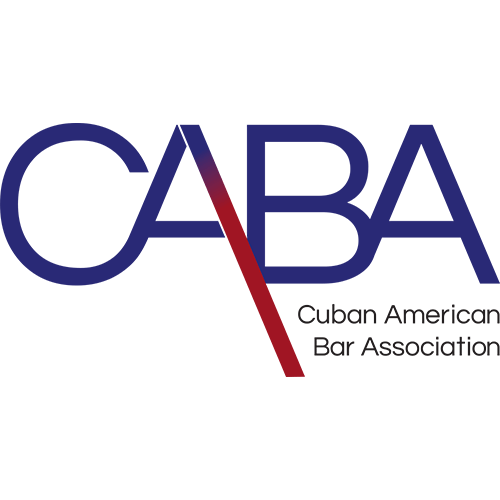Birth Injury: Forceps Delivery Complications
PROTECTING YOUR RIGHTS SINCE 1983
The medical malpractice attorneys at Bernstein & Maryanoff Injury Attorneys have the trusted knowledge and experience necessary to get the maximum compensation for your medical malpractice claim.
Assisted deliveries are defined as natural births where medical instruments like forceps or ventouse suction cups are used to help a mother deliver her child. It’s estimated that forceps are used in about .5% to 1% of all births. While these medical tools are safe and highly effective when used properly and only when necessary, the use of forceps accounts for an estimated 25% of injuries during birth. The use of vacuum cups during delivery accounts for about 13% of injuries.

In cases where deliveries do not go as planned or medical negligence may be at play, it’s important to understand your legal rights and options. The personal injury attorneys at Bernstein & Maryanoff Injury Attorneys offer the legal guidance you need during what is undoubtedly one of the most difficult experiences any parent can face.
NO FEES UNLESS WE WIN
Protecting Your Rights Since 1983
Get the legal advice you deserve when you schedule a free case evaluation with our team today.
Hablamos Español
How Do Forceps Work?
Forceps are medical tools that grasp a baby’s head and guide it through the birth canal. Forceps are typically most effective when they are employed when a mother is experiencing a contraction.
The position of the baby’s head during delivery determines what type of forceps delivery will be used. The three types of forceps deliveries include:
- Low-cavity or mid-cavity forceps
- Outlet forceps
- Rotational forceps
Why Are Forceps Used During Delivery?
The use of forceps during deliveries is to help guide a baby safely through the birth canal. Forceps are deployed for many reasons, including:
- A mother has exhausted all her energy and needs help delivering the baby
- A mother has health conditions, including high blood pressure or heart disease
- The delivery is prolonged despite the mother’s contractions or her efforts to push
- The delivery has become especially difficult
- The baby is showing signs of fetal distress
When Are Forceps Used During Delivery?
It’s important to know that using forceps during delivery is extremely uncommon. Still, there are situations where doctors should use forceps during delivery.
During the birthing process, doctors will monitor the mother’s and the baby’s vitals. If there are signs of fetal distress, this is an indication that medical instruments like forceps should be introduced. For example, if your baby is experiencing stress during labor, such as certain heart rate patterns that could indicate not enough oxygen is going to the brain, your birthing team should employ the use of forceps.
When Doctors Should Not Use Forceps
Conversely, there are situations where doctors should not rely on the use of forceps, at least not yet. Forceps should not be used if:
- A doctor cannot accurately determine how the baby’s head is positioned
- The baby is leading with their arms through the birth canal
- A mother is not fully dilated
- The baby has not moved far enough down into the birth canal
- Your doctor or midwife is not trained to use forceps
- Your baby has a health condition such as a bleeding disorder or a bone condition
Risks of Forceps Use for the Infant and Mother
Pregnancy and delivery risks are naturally present. Just because forceps are used during delivery does not automatically increase your risk. In fact, instrument-assisted birth risks can go down when forceps are used appropriately and when necessary. Still, it’s important to know what risks a mother and their child face when forceps are used during delivery.
Birth Injuries Caused by Forceps Delivery Complications
The risks to a baby if forceps are used are generally mild; however, the risks can be serious in rare cases. Common risks babies face can include:
- Wounds to the head or the face — these wounds include bruising or scratches and will generally heal within a couple of days
- Temporary facial nerve palsy — this occurs when there is nerve damage during delivery in a baby’s face and can leave a baby with temporary muscle weakness and even slight drooping of their face. As with superficial wounds, this injury will generally heal over a couple of weeks.
- Infant skull fractures
- Brain bleeds are exceptionally rare but can happen because of the improper use of forceps. If forceps are used, your medical team will monitor your newborn to rule out any brain bleeds.
- Other neonatal injuries
Possible Complications in Mothers After Forceps Use
Mothers experience their own unique risk when forceps are used during delivery. Common risks include:
- Pelvic organ prolapse — this is when the uterus falls out of position
- Issues controlling bladder
- Vaginal tearing that elongates the healing process. Serious vaginal tears, including third and fourth-degree tears, will require stitching.
- An episiotomy may be required during the delivery, which can also cause an elongated and painful healing process
- Birth trauma
Are Forceps Birth Injuries Considered Medical Malpractice?
If you and/or your child were injured by forceps during delivery, you may have a case for medical malpractice against your OBGYN or hospital. If there was negligence during their delivery, you can hold responsible parties accountable for their negligence through a medical malpractice lawsuit.

Working with an experienced medical malpractice attorney can help you determine if medical negligence was at play during your delivery. An attorney will know the different elements to look for, what evidence to collect, and how to assess your injuries to determine the damages you and your child have sustained.
If you believe you or your baby were injured due to forceps delivery complications, give Bernstein & Maryanoff Injury Attorneys a call today. Our team of Miami birth injury attorneys, paralegals, and investigators will thoroughly investigate your claims to determine if you have a case.
NO FEES UNLESS WE WIN
Protecting Your Rights Since 1983
If you suspect your child’s birth injury in Miami, Florida, was the result of medical malpractice, contact our team today. Schedule your free case evaluation and get the legal representation you deserve.
Hablamos Español
Sources:
Ellis, D. (2023). Analysis Finds High Rates of Severe Maternal Trauma During Forceps, Vacuum Births in Canada.
What Are Some Common Complications of Pregnancy?
Williams, D. (2012). Forceps Delivery.





